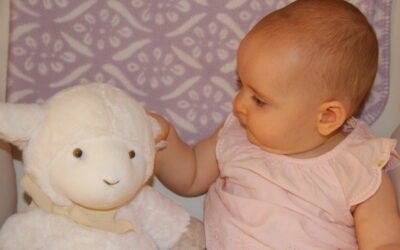Does your baby have a ‘dummy’ ‘pacifier’, ‘soother’, or ‘binky’ (Many names for it, depending on where in the world you are!) or are you thinking of introducing one?
The benefits
Soothing purposes: Both feeding and non-nutritive (aka using the dummy) methods provide a source of comfort for babies. Sucking turns on the calming reflex. This can lower the heart rate and stress levels. They can be useful in situations like car trips or after vaccinations.
SIDS reduction: Research has shown that using a dummy for sleep reduces the risk of SIDS for newborns, even if your baby spits it out during sleep. The AAP (American Academy of Pediatrics) recommend one as part of their nap and bedtime routine.
When to introduce it?
You can start from birth with bottle-fed babies and with breastfed babies you can introduce once nursing is properly established. Not all babies will take to it. In our house, our first daughter loved her dummy beyond belief and our second daughter snubbed it from day one!
When can the dummy cause problems?
Generally speaking, if the dummy is working for you and your baby, then there is no problem! However, if you find your baby waking up after a sleep cycle or multiple times overnight and needing it to be replaced, then I would consider removing it altogether. We don’t want to see it interfering with sleep consolidation. Dentists say prolonged use beyond this age of 2 -3 years can lead to misaligned teeth and potential speech delays.
When is best to remove the dummy?
If the dummy causes frequent wake-ups and is more of a hindrance than a help, I would ideally consider 2 ages. Before 7/8 months: Your baby hasn’t gotten a deep, emotional attachment to it yet, so if it’s causing issues before this age, get rid of it! I recommend removing it completely, as it will quickly be forgotten. You can use white noise as a positive replacement and if they are still 3/4 months old, add in some assisted patting to settle them for sleep if they need it.
After 7/8 months, your baby will have a deeper attachment to the dummy, so we generally advise to keep it. By this age, your baby can replace the dummy by themselves. Teach them how to do this by guiding their hand to the dummy when it has dropped out and guiding their hand to their mouth. Place a few dummies around the cot so they can easily find them if they wake up.
By the age of 3, your child will understand why it is being removed. Parents can get very creative in their ways of doing so. The dummy fairy came to visit our house when we weaned my daughter off it. She chose a toy, and the dummy fairy kindly granted her request! She didn’t give the dummy another thought. Read a story to help with the transition of removing it like “Pacifiers Are Not Forever” by Elizabeth Verdick.
If you are still struggling with the dummy or other issues, book in for a free 30-minute consult with me.







0 Comments